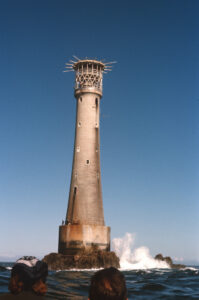
In the olden days it was easy to spot an academic on holiday because they were always the people with slide film in their cameras. Life is different these days. There is a little issue, however. Many people, like myself, have extensive collections of slides which they no longer use. For a while I had a slide scanner, I’m not sure it was very good, but it allowed me to incorporate my slide collection into my lectures. Sadly, several upgrades of computer later it is no longer compatible with my current desktop and for a while my slides have been sitting, neglected, in their racks, slowly gathering dust.
Enter the HEIR project, or to give it its full name the Historic Environment Image Resource. The team, based in central Oxford, are working to digitize old collections of archaeological slides. There are several benefits to this. Firstly, it means that these images do not get lost. Secondly, it provides a wonderful glimpse of many sites that have since been altered unrecognizably. Some, such as Palmyra, have been destroyed. Others, such as Stonehenge, appear in numerous guises across the decades. It is a fascinating glimpse of the passage of time.
Thirdly, it offers the possibility to eavesdrop, visually, on the people of the past. There are well-known archaeologists such as Stuart Piggott, dressed in a practical overcoat at the bottom of a ditch at Windmill Hill (you can’t help feeling that he is posing for the camera just a teensie bit), and there are casual passers-by: people on streets; tourists in the countryside; diggers on site. The images offer true moments frozen in time, glimpses of life long past. You have to spend a bit of time to locate many of these, but it is hardly time wasted: there are fabulous images here and it is not difficult to lose yourself.
Finally, there is the opportunity to see how the practice of archaeology itself has changed. If you search on the word ‘excavation’ for example, you get twenty-two pages of sites in the process of being uncovered. There are people working, sections, plans, walls, pits and trenches. It is all too easy to while away an hour or more looking at the visual archaeology of archaeology itself and you can become more actively involved, helping to tag and identify the sites and images.
I’m sure there must be several PhD topics lurking in the analysis of the images themselves. For me the benefits have been more prosaic. After reading about the project in an online newsletter I was able to contact the team and they have kindly digitized all of my ancient slide collection free of charge. It cost me nothing and now I have access to high resolution (properly scanned) versions of my photos, and the images are all preserved. The only ‘cost’ is that should others wish to use my images they will pay the HEIR project, though the credits remain with me. I doubt I had a glittering career as an archaeological photographer, so this seems a small price to pay.
In fact, going through my slides, prior to transporting them to Oxford, was an interesting task. I was impressed to see the range of sites and locations I had visited. I do remember most, though not all. There is a good collection of obscure Border castles that dates from the ’70s and day trips from Edinburgh in a newly bought second-hand VW Beetle. There are sites around the world: memories of some amazing holidays. And even a scatter of excavations. Digitization means that my slide photographs have taken on a new life. They are not lost. I wonder if the many hundreds of digital images housed on my desktop will be so lucky.
You must be logged in to post a comment.